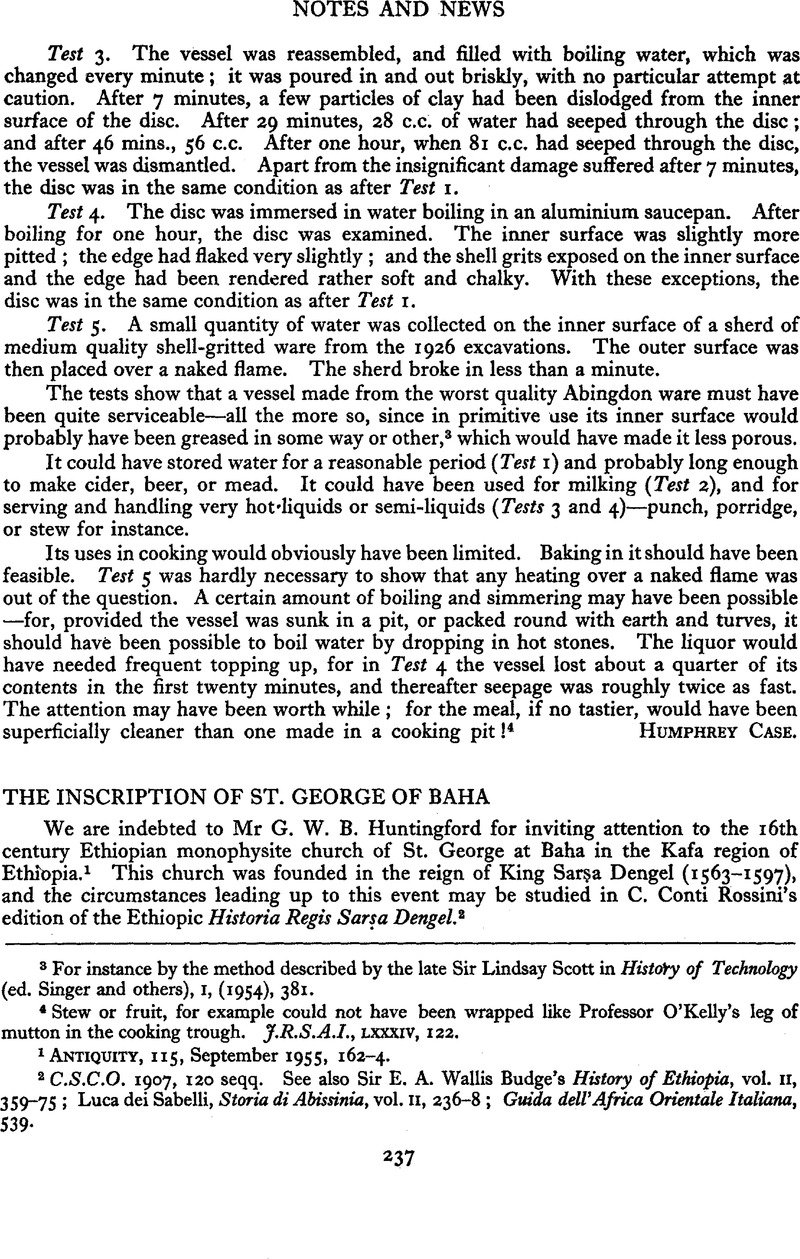No CrossRef data available.
Article contents
The Inscription of St. George of Baha
Published online by Cambridge University Press: 02 January 2015
Abstract

- Type
- Other
- Information
- Copyright
- Copyright © Antiquity Publications Ltd. 1955
References
1 ANTIQUITY, 115, September 1955, 162-4.
2 C.S.C.O. 1907, 120 seqqGoogle Scholar. See also SirBudge's, E. A. Wallis History of Ethiopia, vol. 11, 359-75Google Scholar; Sabelli, Luca dei, Storia di Abissinia, vol. 11, 236-8Google Scholar; Guida dell'Africa Orientale Italiana, 539.
3 Cf. the present writer's forthcoming study on the ‘Hebraic-Jewish elements in Abyssinian (monophysite) Christianity’, especially the chapter on the Ark of the Covenant.
4 I have not got access to Cecchi's book at the time of writing and am therefore relying on Huntingford's reproduction.
5 Dengel (=Virgin) could here stand as the component element of either Sarsa Dengel or Za-Dengel (or Za-Maryam), the baptismal name of Badantcho, the chief of the Enarya (see Conti Rossini, loc. cit).
6 The covering of the tabot is the act of consecration, for it is the tabot and not the church building which is consecrated. Cecchi's gulo is an easily explicable ‘corruption’ of gäläwo and need not necessarily be due to faulty copying. For gäläwä in connexion with the Ark of the Covenant, see Dillmann, Lexicon Linguae Aethiopkae, col. 1140.
7 ‘House’ is supplied at the end of the line. The construction shows the influence of Amgharic syntax.
8 ‘Dengel’ is supplied, but the dots in Cecchi's copy (p. 164 in ANTIQUITY, 115) indicate an omission. The same applies to the end of the line.




